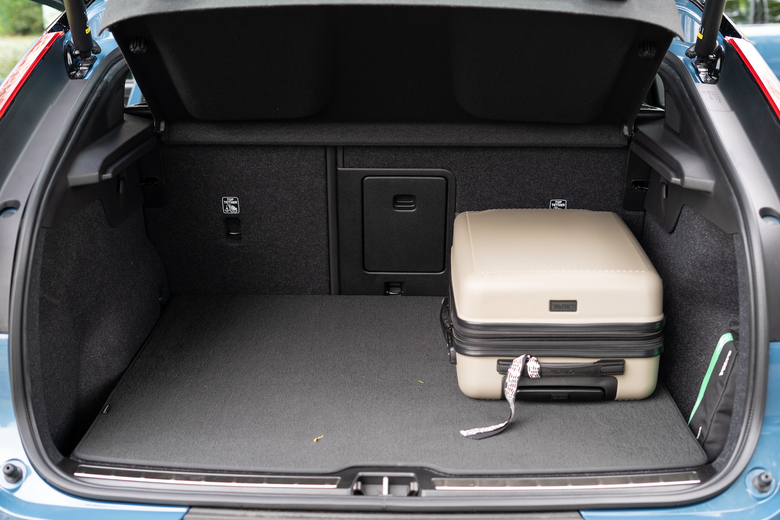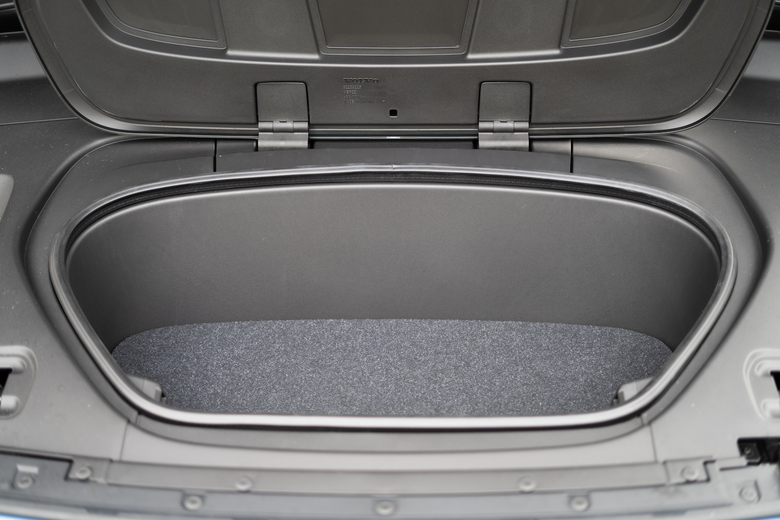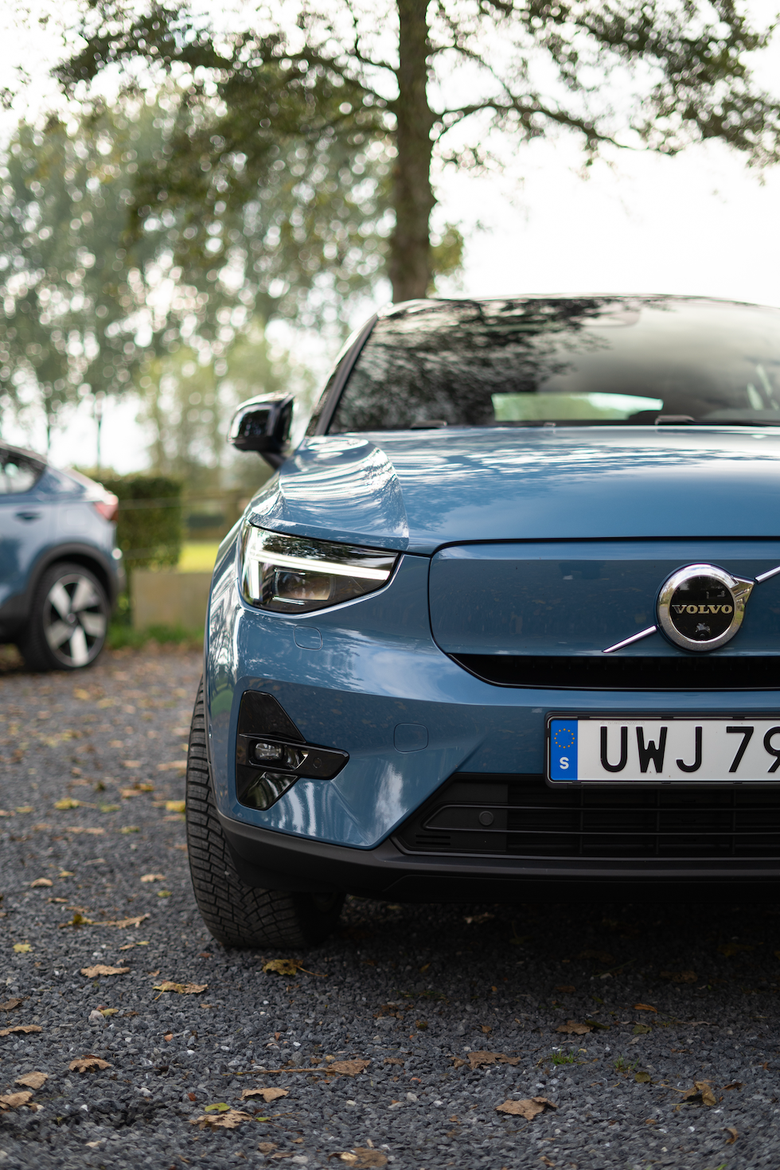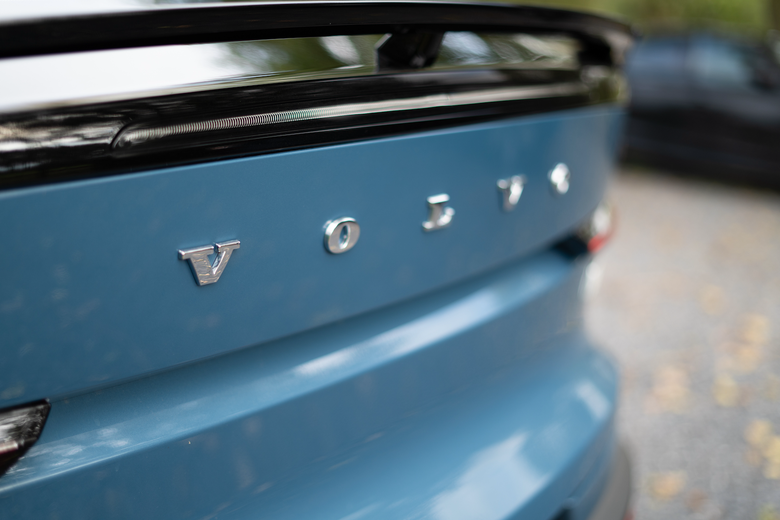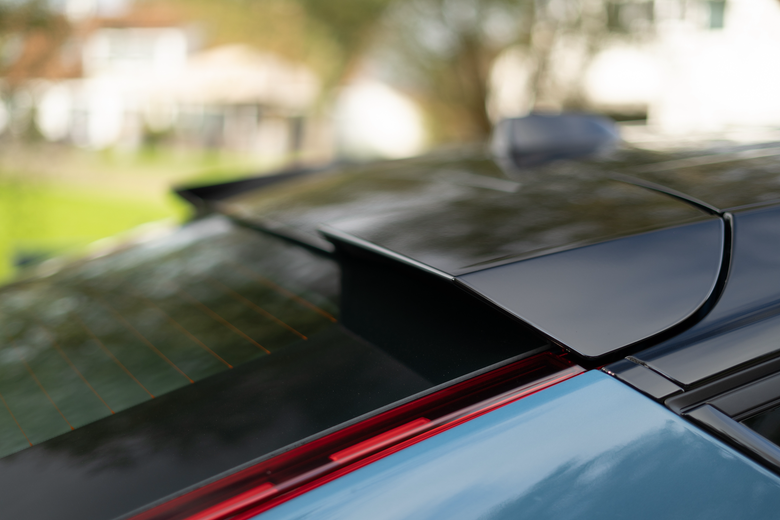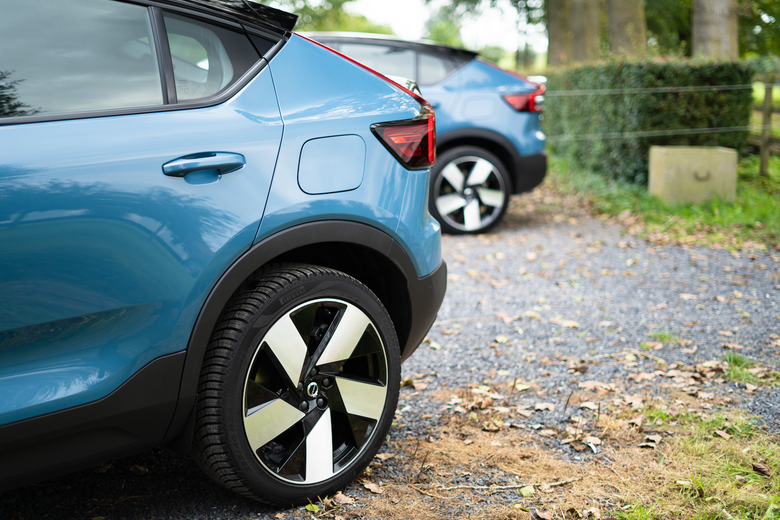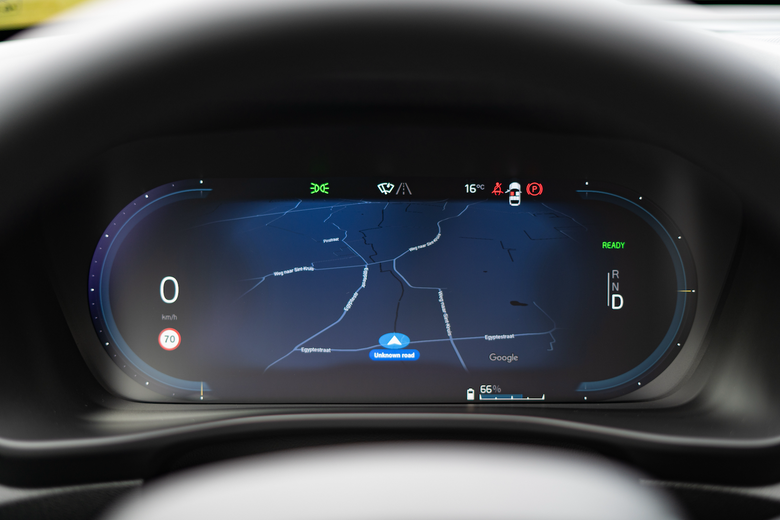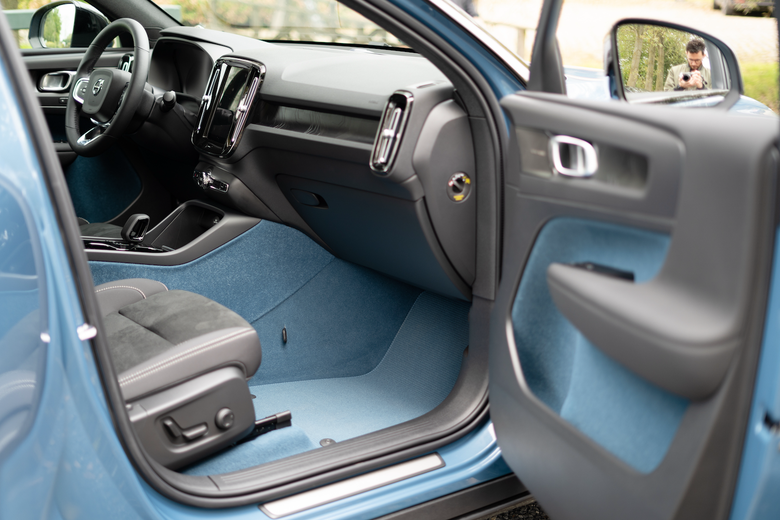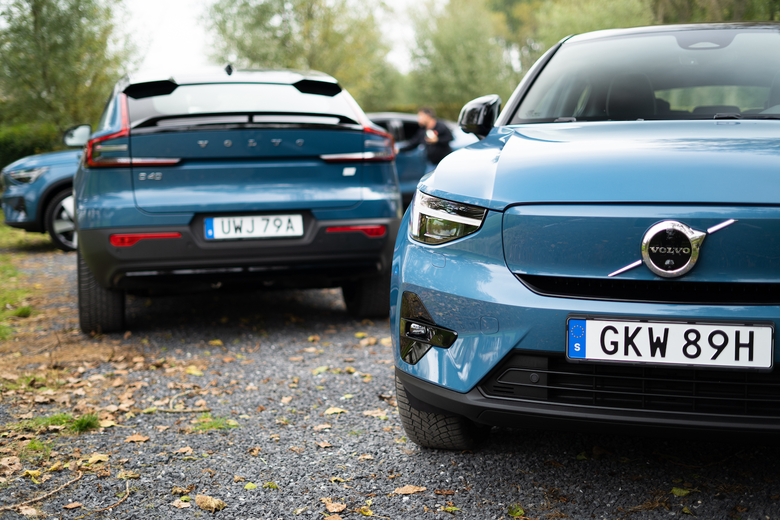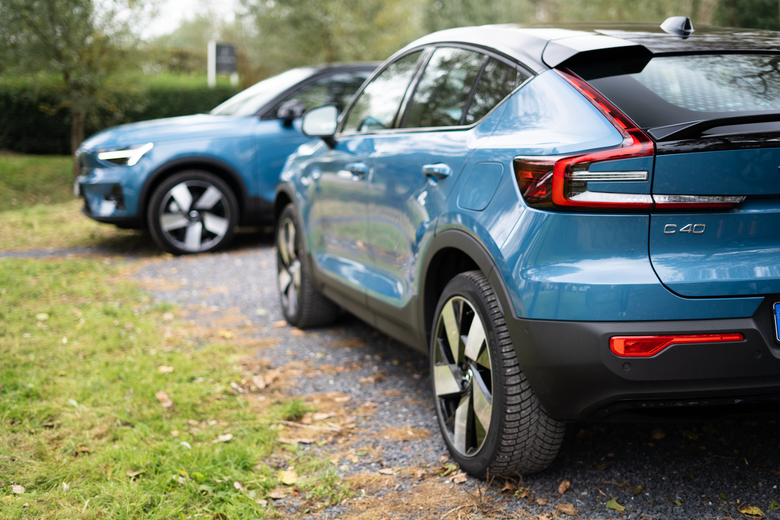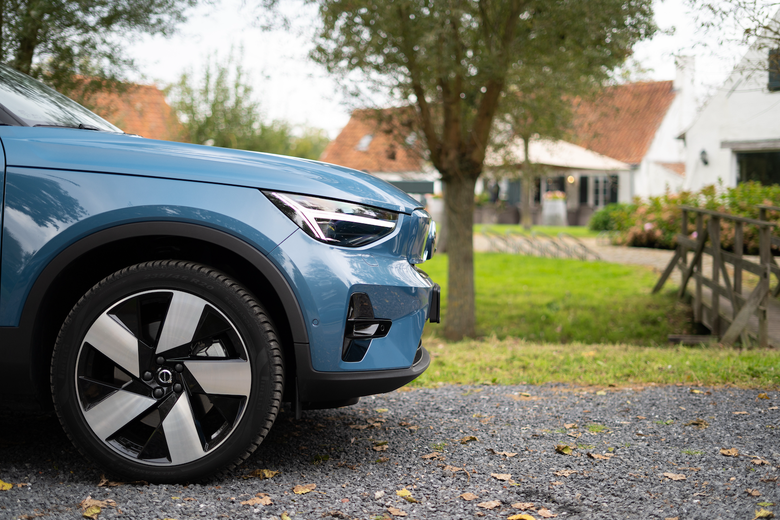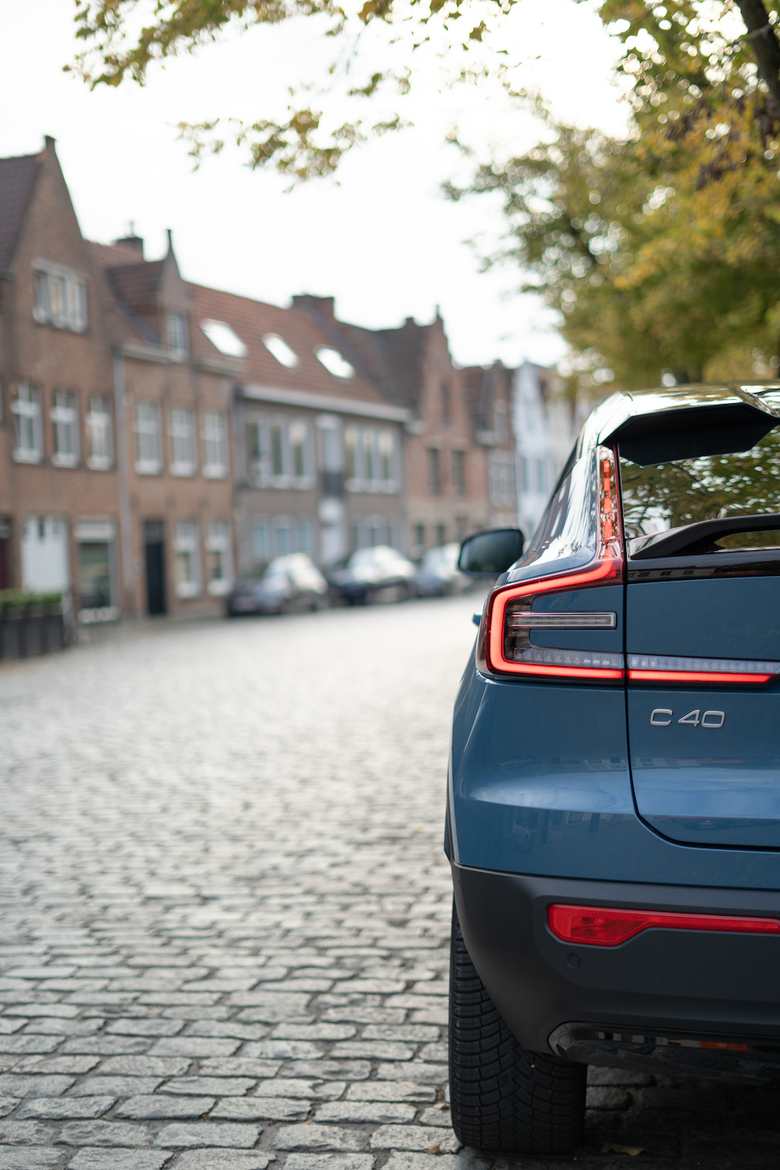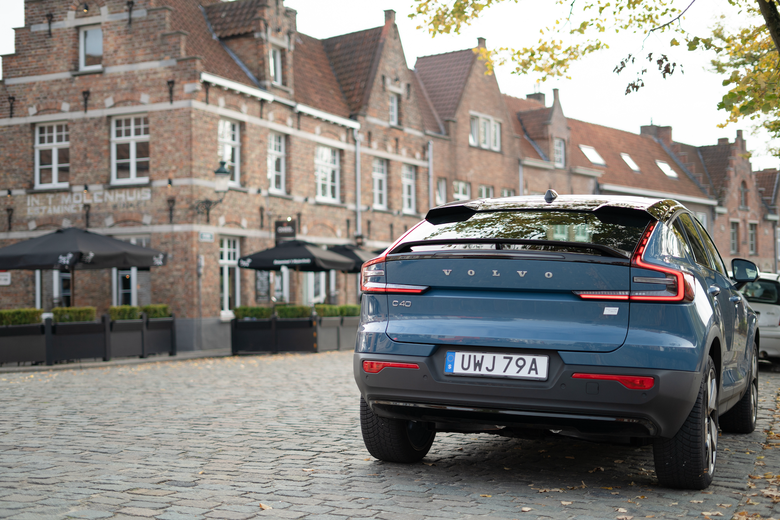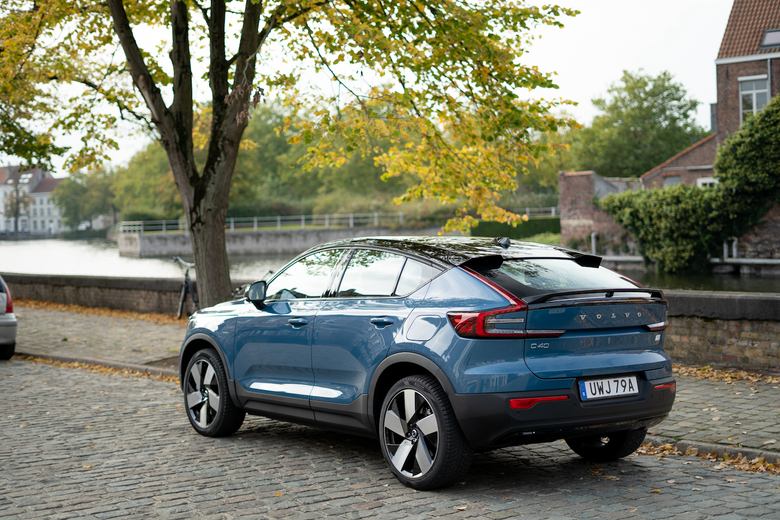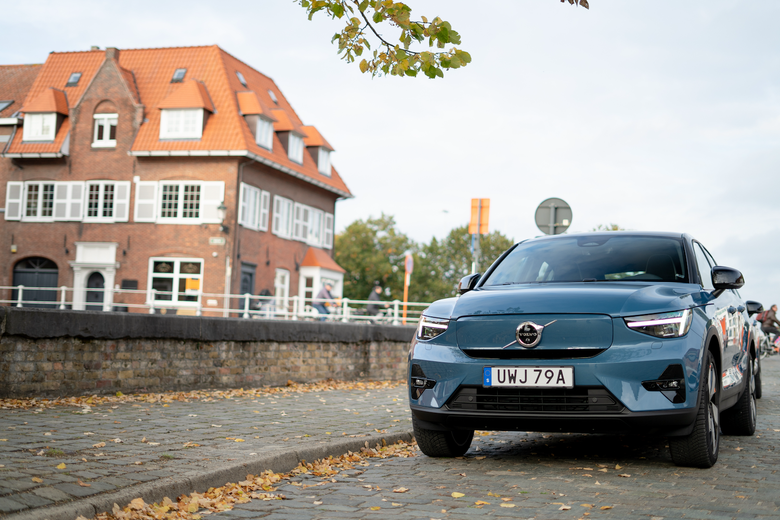The 2022 Volvo C40 Recharge Is The Right Car For The Wrong Price
Volvo's battery-powered coupe-SUV is a fantastic economy EV. Too bad it's priced like a luxury car.
Electric vehicles are all the rage. Coupe-SUVs, with their sloping rear rooflines and compromised visibility, are equally on-trend. Put the two together, with a dash of Volvo's signature Scandinavian design, and you get a fantastic daily driver.
Owning a C40 Recharge would be great, if not for what it will take to actually get your hands on one — nearly sixty thousand US dollars. That price tag comes with certain expectations, and the C40 Recharge doesn't quite meet all of them.
(Full Disclosure: Volvo invited me out to Brussels, Belgium to try out a pre-production C40 Recharge. They paid for my first-ever trip to Europe, including hotels, food, and shockingly fancy airfare. The flight attendant was genuinely concerned when I didn't order champagne before takeoff.)

What Is The Volvo C40 Recharge?
The C40 Recharge is Volvo's most compact battery-powered crossover. It's the company's first electric-only vehicle, with no plans for any future versions to include a gas-burning engine — not even a plug-in hybrid. The C40 Recharge is a look to the future of the company: sustainable materials, sustainable power, and that classic Volvo design language we all know and love.
But, outside of the marketing speak, what really is the C40 Recharge? It's a tiny coupe-SUV (don't think BMW X4 or Lexus RX, think X2 or UX) for city dwellers who want easy street parking and room for four or five. Volvo doesn't even see it as a family car. Rather than taking the kids to soccer practice, Volvo wants this car to take couples on double-dates.
What Are The Specs?
The big question with EVs, right off the bat, is always range. The C40 Recharge gets an estimated 225 miles on a full charge, a claimed 6% increase over the square-backed XC40. Volvo says two-thirds of that improvement comes from the sloped rear hatch, with the remaining third attributed to the lowered roofline. That all makes sense, until you discover that the 2022 XC40 Recharge gets a six-percent boost in range, making it unclear whether the C40's shape nets it any real aerodynamic benefit.
Next is always the charge time question, and Volvo claims a Level 2 charger can refill the C40 Recharge's 78 kWh battery pack in eight hours. With Level 3 fast charging, the C40 can hit 80% capacity in 40 minutes — probably too long for a fast-food stop on a road trip, so go ahead treat yourself to that sit-down lunch. You're worth it.
That battery pack powers two electric motors, giving the C40 Recharge 402 horsepower and all-wheel drive. Torque, every EV's favorite party trick, is 487 lb-ft — enough to shoot the 4800-pound C40 to 60 mph in 4.5 seconds.
What’s Good About The C40 Recharge?
First, and most importantly, the C40 Recharge's powertrain is fantastic. It's a genuine pleasure to drive, in ways I would never have expected from an electric vehicle. Power delivery (at least in one-pedal drive mode) doesn't scale linearly with throttle pedal input — it swells around halfway through the pedal travel, giving the car the feel of a small engine with a big turbo. If you've ever driven a modified hot hatch, with properly tuned boost control, you're likely familiar with the feeling.
Sure, burying the skinny pedal in the carpet will shove you back in your seat, warp you to the next gap in traffic, and put a big dumb grin on your face (or, in my extremely jet-lagged case, make you start laughing out loud alone in a silent car). But the real fun comes with that wave of acceleration that washes over the car at mid-throttle. Linear power is overrated — give us more fun, characterful power delivery.
Of course, a fun powertrain is nothing without a fun chassis, and the C40 Recharge delivers there, as well. It's nimble, even playful, in the tight corners of old city streets. EVs are known for low centers of gravity, and the C40 Recharge takes full advantage of that.
That said, the C40 Recharge isn't some purpose-built sports crossover, and it doesn't have the compromises that would come with that territory. The suspension, despite its competence in turns, is downright plush on rough roads. Belgium has a surfeit of cobblestone roads, which the C40 rolled through without rattles or vibrations. It doesn't completely erase the bumps like a Bentley or Rolls-Royce — you're still aware that the road surface isn't smooth — but it's never punishing.
You also can't talk about the upsides of a modern Volvo without mentioning the looks. Volvo has mastered the art of the distinctive-yet-restrained design language, and the C40 Recharge is no exception. I'm generally not a fan of these sloped-roof SUVs, with the exception of the Cayenne Coupe and the Mustang Mach-E, but the C40 easily earns a place on my list of beautiful crossover coupes. It's not overstyled like so many ICE-engined competitors, nor has its character been eroded away in a wind tunnel like the Tesla Model Y.
Other special mentions go to Volvo's driver-assistance software Pilot Assist and the C40 Recharge's Harman Kardon stereo. Pilot Assist is imperfect, but it's still safely in "usable" territory. It stays a bit further to the right of a lane than I would under my own power, and doesn't always recognize a hand on the wheel without some input, but it's definitely competent enough to take a lot of the stress out of those long highway hauls. As for the stereo, it's one of the best I've heard in a car — a slightly treble-heavy mix but incredibly crisp and clear across the audio spectrum.

What Does The C40 Recharge Do Just Okay?
The C40 Recharge is small, and with that comes certain tradeoffs. The rear of the C40 is large enough to handle a few carry-on bags, but the cargo area isn't much deeper than a duffel bag or piece of wheeled luggage. For those looking to take their new crossover on a big family vacation, you should be able to make it work — just make sure you practice with a lot of Tetris before packing.
You also get a frunk, however, that's considerably less useful for luggage. Not only will it not fit a carry-on, even cramming a backpack in is questionable. It's a shallow compartment, made even shallower by the tools included beneath the cargo floor. Messenger bags, slings, and maybe some groceries are the name of the game here. Anything bigger, and you risk crushing your things.
What’s Bad About The C40 Recharge?
First and foremost, rear visibility in this crossover is what we in the business call Absolute Trash Garbage. Usually ATG-tier rear visibility means coupes and convertible — the Chevrolet Camaro and C8 Corvette, the blind spots on the ND Miata. The C40 Recharge is, quite possibly, worse than all three.
While driving the C40, I found myself constantly bobbing up and down in the driver's seat to scan the view behind me. Volvo may be Swedish, but it seems their designers took into account the first rule of Italian driving. The C40's steeply raked rear window only hints at what's going on behind the car. At one point, while stopped at a red light, I looked in the rear view mirror only to see the entire rear window had gone white. It turned out to be a cargo van behind me — not the side, but just the hood had taken up the entire rear view.
After driving the C40 Recharge, I got a chance to talk with one of the Volvo design directors who worked on the car. I asked him, almost immediately, if they had considered a video display on the rear-view mirror like one would find in a Chevy Bolt. Apparently, it was never even in the running as a feature to add.
Fortunately, time spent bouncing in the driver's seat to scan the horizon behind you is time not spent using the C40 Recharge's Android-powered infotainment. Many of the complaints with this system are the fault of Google, rather than Volvo (though the decision to hide remaining range in the infotainment, and only display a battery percentage in the dash, is definitely a Volvo one). But to the average end-user that distinction won't matter.
When speaking to an infotainment UX engineer, I proposed a system for how issues might be fixed in production vehicles:
-
A C40 Recharge owner notices a problem with their infotainment. Given that it's a Car Issue, they take the car to their local dealership.
-
The dealership, being a Volvo repair shop and not a team of Google software developers, can't do much to help beyond checking for available updates. If that doesn't help, they can send error logs off to Volvo corporate.
-
Volvo corporate, seeing errors roll in from customers, forwards them on to Google. Google creates a support ticket with the Android Automotive team, who patches the issue and releases an OTA update out to affected vehicles.
This Rube Goldberg method of squashing software bugs is far from ideal, but the UX engineer from Volvo admitted that it's very possible for this exact sequence of events to play out. Taking into account the age demographics likely to purchase a nearly sixty-thousand-dollar crossover, and how likely those age groups are to ever update their phone when "it works fine as it is," some of these buyers may never functionally see their issues resolved.

Unfortunately, the interior surrounding that infotainment is also flawed. The design and layout of the cabin is, in classic Volvo fashion, absolutely fantastic. Everything is where you think it should be, and the layout makes sense. Spinning the volume knob, for example, doesn't also mean elbowing your drink out of a cup holder. It looks good, and it's all coherent — if only it felt good to use.
Volvo will happily tell you all about the materials used in the C40 Recharge's interior. They're sustainable, they're leather-free (though the company won't commit to calling them vegan) and they're lightweight to maximize range. The cost of all this, however, is that the cabin doesn't feel luxurious enough for the price point.
The seats, with their leather-free design, feel hard-wearing and economical. The carpet, made from 71 recycled bottles per car, feels not unlike the fur on a tennis ball. The shiny black plastic in the center console rings out hollow when tapped, and the volume knob feels like plastic the thickness of a laptop keycap.

Final Thoughts
The Volvo C40 Recharge is a fantastic entry-level electric car. I don't want to call it an electric economy car, because its design and performance elevate it well above that tier, but the interior materials do drag it down. The seat comfort and the feeling of the touch points simply don't match a near-$60,000 price tag.
At $40,000, the C40 Recharge would be a steal. At $50,000, where comparable trims of the Mustang Mach-E and VW ID.4 sit, it would be a solid contender. At $58,750 before destination fees (and before the $7,500 EV tax credit) it's a much harder sell.
I'll admit, there are people for whom this car is perfect. There is an ideal buyer out there who will enjoy this recycled interior, who understands that the thin plastic let Volvo eke out another few miles of range. There's a buyer who wants their friends to comment on the weird carpet, just so they can explain how many bottles came out of a landfill to make it.
Unfortunately for the C40 Recharge, that buyer is probably a rarity, even among the chic yuppies Volvo is targeting. Conveniently for those buyers, however, Volvo offers an alternative: the XC40 Recharge shares the C40's drivetrain, its interior layout, and many of its dimensions, but exchanges the hard-wearing materials for luxury leatherette and the comically undersized rear window for standard upright glass.
So, for the prospective C40 Recharge buyer, the question is this: How many NPR tote bags do you own? If you've lost count, you'll probably appreciate the sustainable interior and love the car. Otherwise, get the XC40 Recharge instead. You'll be happier for it.




